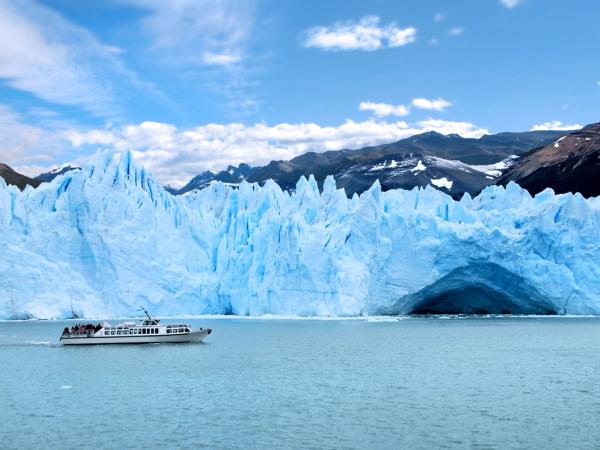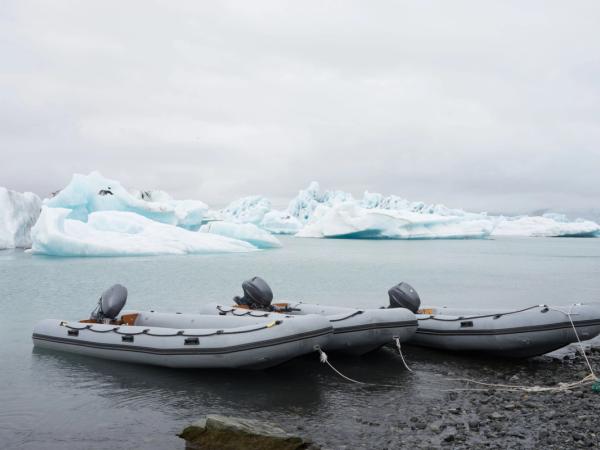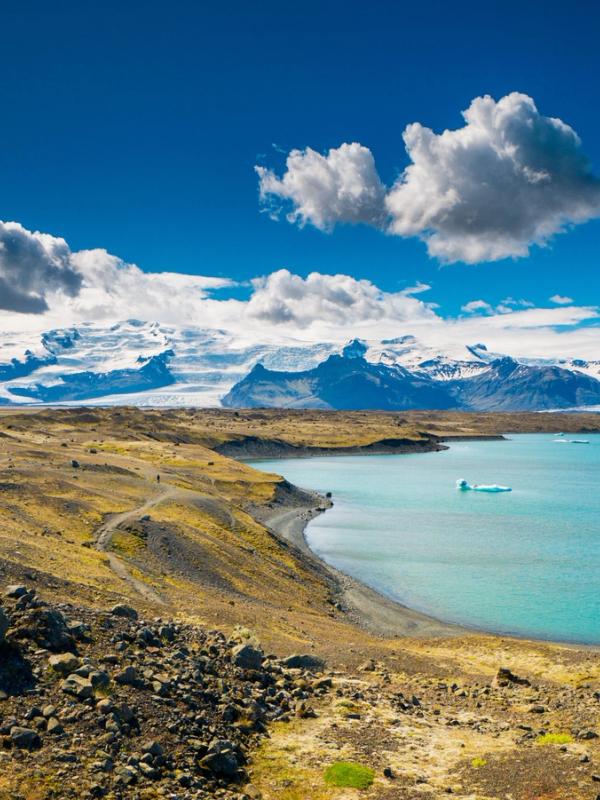
The Frozen Gem: Jökulsárlón Glacier Lagoon
There are tons of unique places in Iceland. Geological features that can’t be found anywhere else on the planet. This country is a treasure chest for nature enthusiasts, full of marvels that often leave visitors in awe. And one of these places is, without a doubt, Jökulsárlón Glacier Lagoon. If you’ve ever scrolled through stunning photos of Iceland, you've likely seen it. With its surreal blue waters dotted with massive, floating icebergs and a backdrop of the towering Vatnajökull Glacier, this lagoon is one of those things tourists expect to see when they come to this magnificent Nordic country.
Jökulsárlón is nothing short of magical. Located on Iceland’s southeast coast, this glacier lagoon is a must-visit for nature lovers, photographers, and anyone seeking to immerse themselves in Iceland’s rugged beauty.
In this guide, we’ll take you through everything you need to know about this amazing place: how it was formed, what to do there, how to get there, and what to see nearby. Come with us to discover one of Iceland’s most captivating natural wonders.
Key Takeaways
- Jökulsárlón Glacier Lagoon is located in the southeast coast of Iceland.
- It’s part of Vatnajökull National Park, one of the three national parks in the country.
- There are big pieces of blue ice floating on the water before drifting out to the sea.
- Many of these little icebergs end up at the famous Diamond Beach, where they create a beautiful color contrast with the black sand.
What’s Jökulsárlón Glacier Lagoon?
Jökulsárlón Glacier Lagoon is a remarkable natural phenomenon. It lies at the edge of the Breiðamerkurjökull glacier, which is part of the much larger Vatnajökull glacier—the largest glacier in Europe by volume. The lagoon was formed as the glacier began to retreat due to rising temperatures around the start of the 20th century. This retreat accelerated after the 1930s, creating a depression in the land that filled with meltwater and formed the lagoon. In fact, the name literally means "glacial river lagoon."
Over the past century, Jökulsárlón has grown in size as the glacier continues to retreat. It’s now one of the deepest lakes in Iceland, with a maximum depth of 248 meters (814 feet). The icebergs that break off from the glacier float in the lagoon for days, weeks, or even months before eventually drifting out to the sea.
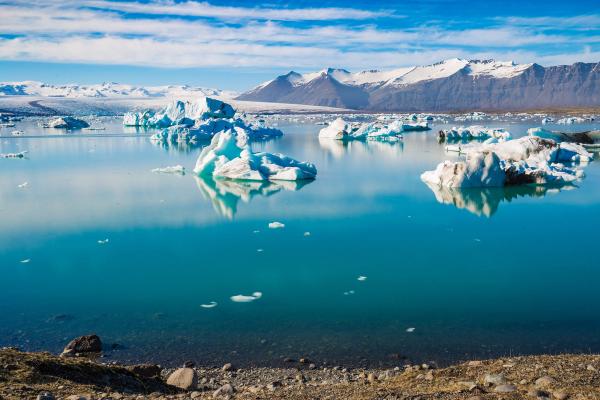
Facts About Jökulsárlón Glacier Lagoon
- Size: The lagoon currently covers around 18 square kilometers (7 square miles) and continues to expand because the glacier continues melting. It’s the largest glacier lake in Iceland.
- Icebergs: The lagoon is filled with icebergs of all shapes and sizes, many of which have a striking blue hue caused by ice compression within the glacier. Some icebergs also have black streaks from volcanic ash, giving them a unique appearance.
- Wildlife: Jökulsárlón isn’t just a stunning landscape; it’s also an ecosystem itself. Seals can often be seen swimming between the icebergs, and various bird species, such as Arctic terns and skuas, make their home here.
- Hollywood Fame: The dramatic scenery of Jökulsárlón has been displayed in many movies and music video clips. It’s been featured in films like Batman Begins, Die Another Day, and Lara Croft: Tomb Raider.
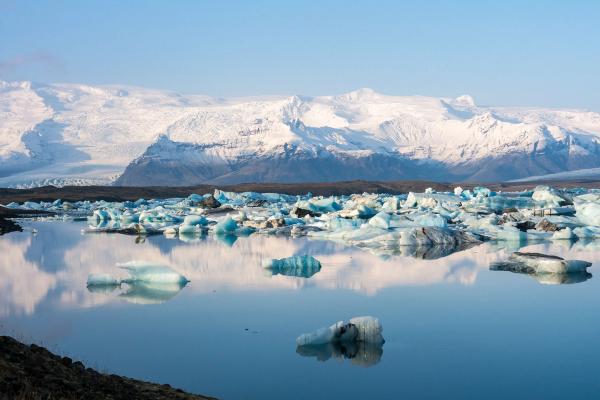
Where is Jökulsárlón Glacier Lagoon and How to Get There
Jökulsárlón is located in southeast Iceland, approximately 380 kilometers (236 miles) from Reykjavik, the country's capital. It’s part of Vatnajökull National Park and not far from the town of Höfn, one of the most important cities in southeast Iceland.
The best way to get to Jökulsárlón, and to move around the country in general, is by car. The journey from Reykjavik takes around 4.5 to 5 hours, but you’ll go through many amazing landscapes, making the drive part of the adventure.
We’re going to take Reykjavik as the starting point. Take the Ring Road (Route 1), the backbone of Iceland’s road system, heading east. The first part of the drive will take you through the southern lowlands, passing charming towns like Hveragerði and Selfoss.
About halfway through your journey, you’ll reach the town of Vík. This is a great place to take a break and explore the famous black sand beach of Reynisfjara. Then, continue on the same route. On the way, you’ll pass two of Iceland’s most famous waterfalls: Seljalandsfoss and Skógafoss. Both are worth a stop.
As you continue your journey, you’ll start to see the massive Vatnajökull glacier. Then you’ll know you’re getting closer. Jökulsárlón is just off the road, and the road signs make it impossible to miss. While the drive is long, it’s incredibly scenic and offers plenty of opportunities to stop and explore along the way.
What to Do and See at Jökulsárlón Glacier Lagoon
Jökulsárlón is a sight to behold, but there are more things to do there than just admiring the lagoon from the shore.
Boat Tours Among the Icebergs
One of the most popular activities at Jökulsárlón is taking a boat tour that allows you to get up close to the icebergs. There are two main types of boat tours available. First, you’ve got the amphibious boats. Large, stable boats, with a capacity for many passengers at once, that take a slow tour around the lagoon, providing plenty of time to enjoy the views.
The other option, for the more adventurous, is taking a Zodiac boat tour. They are smaller and faster, with a capacity for fewer passengers. On the other hand, they get deeper into the lagoon and closer to the icebergs.
Both tours give you the chance to witness the icebergs up close and possibly see seals swimming alongside the boat. No matter which option you choose, seeing these massive blocks of ice floating peacefully in the waters is unforgettable.
Photography
If boat tours aren’t your thing, don’t worry, you can still enjoy Jökulsárlón from the shore. The lagoon is surrounded by trails that offer plenty of great spots to watch the icebergs and the surrounding landscape. One of the best features of Jökulsárlón Glacier Lagoon is that it never looks the same, as the pieces of ice are constantly moving and shifting. It’s a fantastic spot for photography. Whether you're a professional or an amateur with a smartphone, you’ll be able to capture some truly stunning images.
The early morning and late evening light is particularly magical, as the low light creates a great atmosphere. If you come in winter, there are chances to see the Northern Lights dancing over the lagoon, a view that you’ll never forget. In fact, Jökulsárlón is often listed as one of the best places to see this phenomenon.
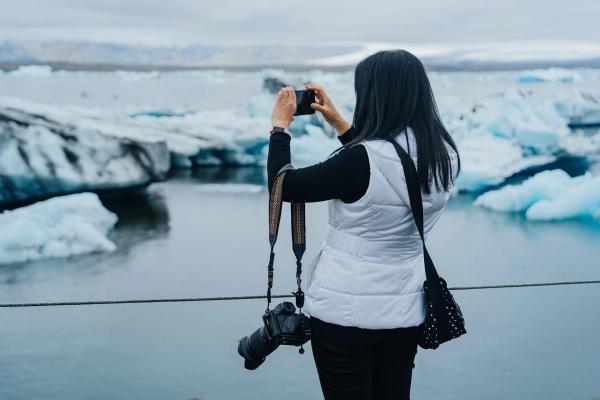
Diamond Beach
Many of the icebergs that float in Jökulsárlón Glacier Lagoon drift out to the sea, and many end up in the famous Diamond Beach. This beach, one of the most iconic black sand beaches in Iceland, is spectacular by itself. But it gets even better with the blue chunks of ice on the sand. The color contrast created is just spectacular. The smaller icebergs scattered along the beach look like diamonds, giving the beach its name.
This is one of the best places to photograph the unique combination of black sand, blue ice, and the waves of the Atlantic Ocean.
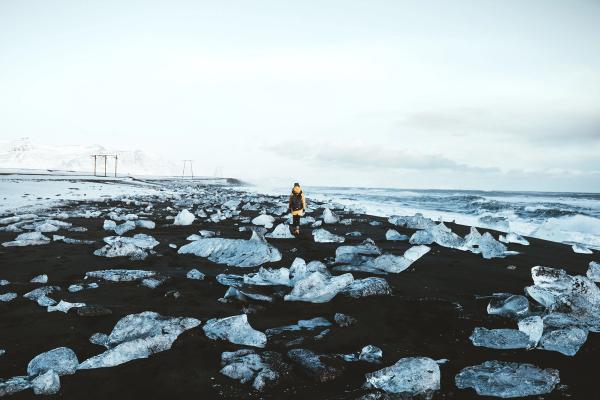
Wildlife Watching
Jökulsárlón is not just about icebergs. This place is the home of many animal species. As we said before, seals are often seen swimming in the lagoon or just resting on the ice or the rocks. They’re most active during the early morning or late afternoon.
In addition to seals, Jökulsárlón is a great place for birdwatching. There are large colonies of Arctic terns, great skuas, and gulls in the area. In the summer, you can even see the charming puffin nesting in the nearby cliffs.
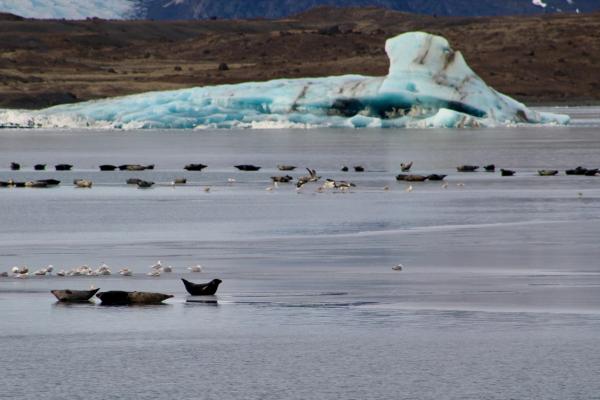
What to See Near Jökulsárlón Glacier Lagoon
Jökulsárlón is undoubtedly one of the main attractions in this part of the country. But there’s much more to see nearby, as the area is filled with incredible natural monuments.
Fjallsárlón Glacier Lagoon
Just a short 10-minute drive from Jökulsárlón, you’ll find another beautiful glacier lagoon: Fjallsárlón. It’s smaller and less famous than Jökulsárlón, so it’s less crowded. Fjallsárlón is fed by the Fjallsjökull glacier, a smaller outlet glacier of Vatnajökull.
Fjallsárlón doesn’t have the same volume of icebergs as Jökulsárlón, but it’s also a quite stunning view. There are boat tours here as well, and you’ll have the chance to get closer to the glacier.

Vatnajökull Glacier and Ice Caves
Vatnajökull is the largest glacier in Europe and dominates the landscape around Jökulsárlón. It also gives its name to the national park, the largest in all of Europe. Seeing it all is highly recommendable, but it’s huge, as it covers around 14% of the entire landmass of Iceland.
But if you want to see a glacier up close, guided tours are available. They will take you onto the ice, where you can explore the intricate crevices and ice formations up close. Visiting the glacier is something that should be done with an expert guide, so don’t venture on your own.
In the winter months, you can also visit the famous ice caves that are created inside the glacier. These natural wonders are created by meltwater carving tunnels through the ice. They freeze again in winter, and new ones are created the following year. Remember that ice cave tours are only available during the colder months when the caves are stable and safe to enter.
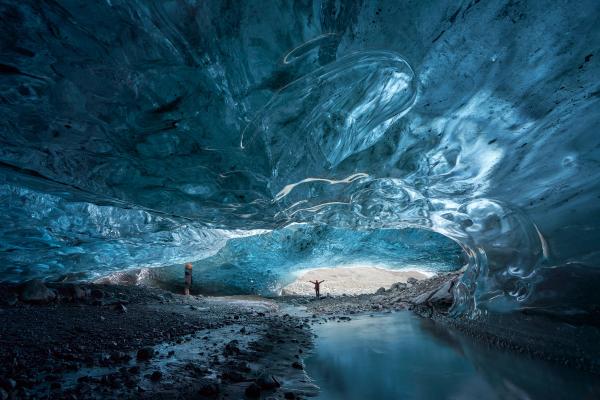
Skaftafell National Park
Skaftafell was a national park that was integrated into the larger Vatnajökull National Park in the past. This area has numerous hiking trails that range from easy walks to more challenging routes.
One of the most popular hikes in Skaftafell is the trail to Svartifoss, a stunning waterfall framed by hexagonal basalt columns. The hike to Svartifoss is relatively easy and takes about 1.5 hours round-trip.
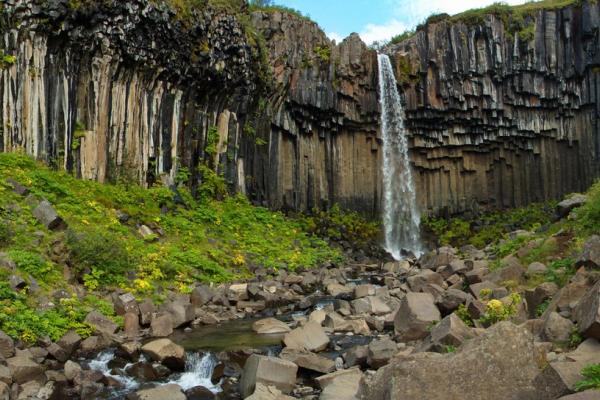
Höfn
The fishing town of Höfn, located about an hour’s drive east of Jökulsárlón, is another great place to visit. This city is known for its fresh seafood, especially lobster, which you can taste in one of the town’s restaurants.
In addition, Höfn is also a great base for exploring the surrounding glaciers and fjords. The town offers spectacular views of Vatnajökull and is a good place to stock up on supplies if you’re planning to continue your journey from here.

Ingólfshöfði Nature Reserve
If you are interested in nature and wildlife, a trip to the Ingólfshöfði Nature Reserve is a must. This remote area is home to a large colony of puffins during the summer months, as well as other seabirds like guillemots and fulmars. The reserve is only accessible via guided tours, which typically involve a tractor ride across the black sand plains followed by a hike to the cliffs where the birds nest.
The reserve also has a place in history and local folklore. The legend says that Ingólfur Arnarson, the first permanent settler of Iceland, touched land here for the first time in the 9th century.
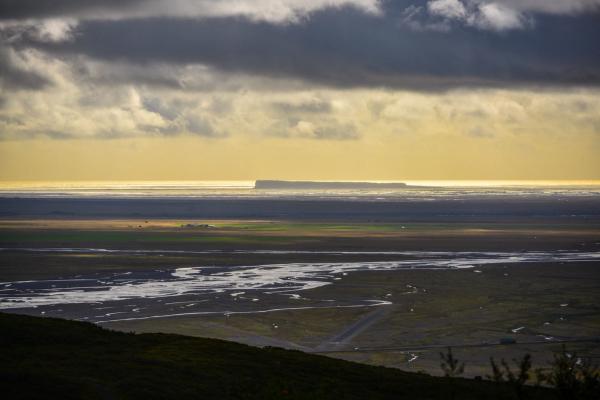
The Weather at Jökulsárlón Glacier Lagoon
Iceland’s weather is famously unpredictable, and Jökulsárlón is no exception. The lagoon is located near the coast, which means it experiences relatively mild temperatures compared to other parts of the country. Still, conditions can change rapidly, especially due to the wind. Here’s what to expect during each season:
Spring (April and May)
Spring at Jökulsárlón is a time of transformation. The snow begins to melt, and the icebergs start to break apart and float in the lagoon. Temperatures usually range from 0°C to 10°C (32°F to 50°F). It’s still chilly, but the days start getting longer, and the temperatures rise with the passing of weeks. Spring is a great time to visit if you want to avoid the summer crowds but still experience plenty of daylight.
Summer (June to August)
Summer is the most popular time to visit Jökulsárlón, and for good reason. The temperatures are mild, ranging from 5°C to 15°C (41°F to 59°F), and the days are long. You can get close to 24 hours of daylight by the end of June. The icebergs are at their most active during the summer months, and you’ll have the best chance of seeing seals and other wildlife. However, be prepared for crowds, as summer is the peak tourist season in Iceland.
Autumn (September and October)
Autumn is another transitional season at Jökulsárlón. Similar to spring, but going in the opposite direction. The temperatures drop, moving between from -2°C to 8°C (28°F to 46°F), and the days start getting shorter. The first days of snow can be expected during this season. On the other hand, the fall colors make the landscape even more beautiful. It’s also the start of the Northern Lights season, so if you visit in late autumn, you might be lucky enough to witness this natural phenomenon over the lagoon.
Winter (November to March)
This season has both pros and cons. Temperatures can range from -5°C to 3°C (23°F to 37°F), and while the days are short, the long nights offer excellent chances to see the Northern Lights. Winter is also the best time to explore the nearby ice caves. However, be prepared for icy roads and limited daylight, so plan your travel accordingly.
| Season | Temperature in ºF | Temperature in ºC |
| Spring (April and May) | 32°F to 50°F | 0°C to 10°C |
| Summer (June to August) | 41°F to 59°F | 5°C to 15°C |
| Autumn (September and October) | 28°F to 46°F | -2°C to 8°C |
| Winter (November to March) | -5°C to 3°C | 23°F to 37°F |
Travel Tips
- Best Time to Visit: Jökulsárlón is a great destination all year round, but each season offers a different experience. Summer is perfect for long days and wildlife watching, while winter offers the chance to see the Northern Lights and explore ice caves.
- Dress Appropriately: Iceland’s weather is unpredictable, so it’s essential to dress in layers. This way, you can adapt to the constant changes. Even in summer, the area around the lagoon can be chilly due to the proximity to the glacier, so bring a warm jacket and waterproof clothing.
- Stay Safe: While the icebergs are beautiful, they can be dangerous. Don’t get too close to the water’s edge, as icebergs can flip or break apart suddenly, creating waves.
- Fuel Up: There are fewer gas stations the further east you travel, so make sure to fill up your tank in towns like Vík or Höfn before continuing your trip.
- Bring Snacks: There are limited dining options near the lagoon, so it’s a good idea to bring your own food, especially if you plan on spending the day exploring the area.
Conclusion
Jökulsárlón Glacier Lagoon is a natural wonder that should be on the list of every traveler who comes to Iceland. It's a fantastic place in constant change and evolution, and each visit will offer something different. You can embark on a boat tour or simply walk around the lagoon enjoying the views of the icebergs floating in the water or the impressive Vatnajökull glacier.

